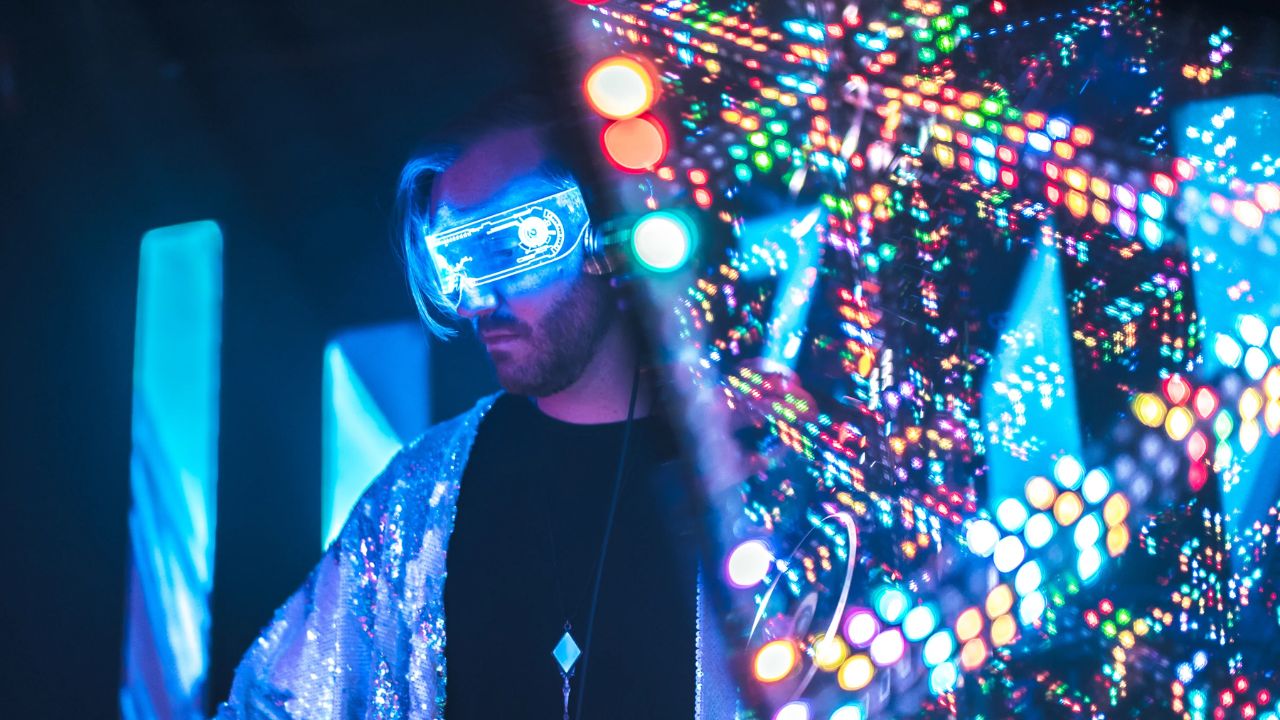Using appropriate DJ lights enables people to transform their living room or basement space into a complete dancefloor setup. The proper illumination of spaces determines how a club environment feels to its visitors. Every lighting fixture in the setup works together to generate party energy and maintain the mood and visual dance patterns of the event. People who want to experience club energy in their homes need to learn how to use DJ Lights properly.
The Role of Lighting in the Club Experience
A club exists beyond musical entertainment because it delivers a complete sensory experience. A well-lit environment becomes extraordinary through the power of illumination. The synchronized effects together with rhythmic lighting patterns and color changes create a harmonious experience with music that maintains high energy levels throughout the crowd. A home environment requires lighting to serve two purposes: it needs to enhance musical enjoyment while setting the mood of a confined space.
DJ lights possess the ability to transform any ordinary space into an exciting vibrant environment. The appropriate lighting system provides both visual enhancement and event excitement during birthday parties, weekend gatherings and individual DJ practice times.
The Selection of Appropriate DJ Lighting Equipment
The choice of home DJ lights depends on the available space and the music type and the desired atmosphere. Small spaces require lights that include mini moving heads and PAR lights together with LED strobes. These lighting fixtures provide multiple effects while producing intense visual displays that do not become overpowering for the room.
Moving head lights work best in residential settings since they generate movement along with dynamic lighting patterns. The combination of lights with a fog machine generates professional-quality beams that penetrate foggy areas. LED PAR lights provide deep saturated color washes which users can mount or place on the floor for complete illumination.
The audience loves laser lights as a lighting option. The lights produce intense beams that dance through various patterns or match the music’s tempo. Correct usage of these lights creates an expanded visual effect that enhances space dimensions while adding aesthetic appeal. Users who prefer automatic beat-triggered lighting operations should consider sound-activated lights.
Syncing Lights with Music
The synchronization between lights stands as a vital component in club lighting systems. The sensory experience becomes more powerful when lights synchronize their movements with music beats. Modern DJ lights contain sound activation technology that uses built-in microphones to detect beats and modify lighting patterns.
Users with advanced skills can program their lighting sequences through DMX controllers or lighting software. Users can program their lighting effects, including scenes, fades, and chases, through these tools based on musical tracks or tempo. The market offers simple DMX interfaces, which simplify the process of lighting synchronization for new users.
The trend of smart DJ lights continues to gain popularity in the market. Users can manage these devices through apps while the devices feature preloaded settings for different events, music genres, and mood types. Home users benefit from complete control that allows them to change lighting moods instantly from relaxed lounge scenes to intense rave atmospheres.
Essential Guidelines for Layout
The arrangement of lights within the space determines how well a club-like environment can be created. To create an authentic club-like environment in your space, you need more than basic room illumination. A home lighting setup should feature illumination that emerges from above and beside the room as well as from the floor to generate a complete sensory experience of color and movement.
Lighting stands together with wall mounts enable you to guide effects precisely where they need to be displayed. The corners of a room work well for uplighting effects to generate dramatic shadows and enhance ambiance. Moving heads and moonflower lights attached to ceiling projection systems will expand the space and add movement to the room.
The visual effect can be enhanced by incorporating mirror balls along with haze machines and UV lights. The additional lighting elements in the setup reflect and enhance the light patterns to create an upscale, textured lighting effect that works well in limited spaces.
The Final Touch
The true essence of the atmosphere goes beyond bright lights because it focuses on how light elements work with their environment. The DJ lighting system will shine brighter when you reduce overhead light intensity to a minimum or turn off all lights. Subtle backlighting and ambient glow in darkened areas will prevent the room from becoming too harsh or disorienting.
A setup’s ability to transform depends on the level of control available to the user. Users can modify the entire party atmosphere by using remote controls, apps, or DMX systems through a few simple clicks or taps. The system’s adaptability enables users to switch effortlessly between musical selections and mood transformations and energy changes during the entire party duration.
Conclusion
Home DJs today can achieve unforgettable party atmospheres without requiring nightclub-level expenses for their setups. The market now offers small, affordable, intelligent DJ lighting systems that enable everyone to transform their home into a club-like atmosphere. When lights and music synchronization combine with strategic placement, the most basic room can become an energetic party space that matches any nightclub experience.

